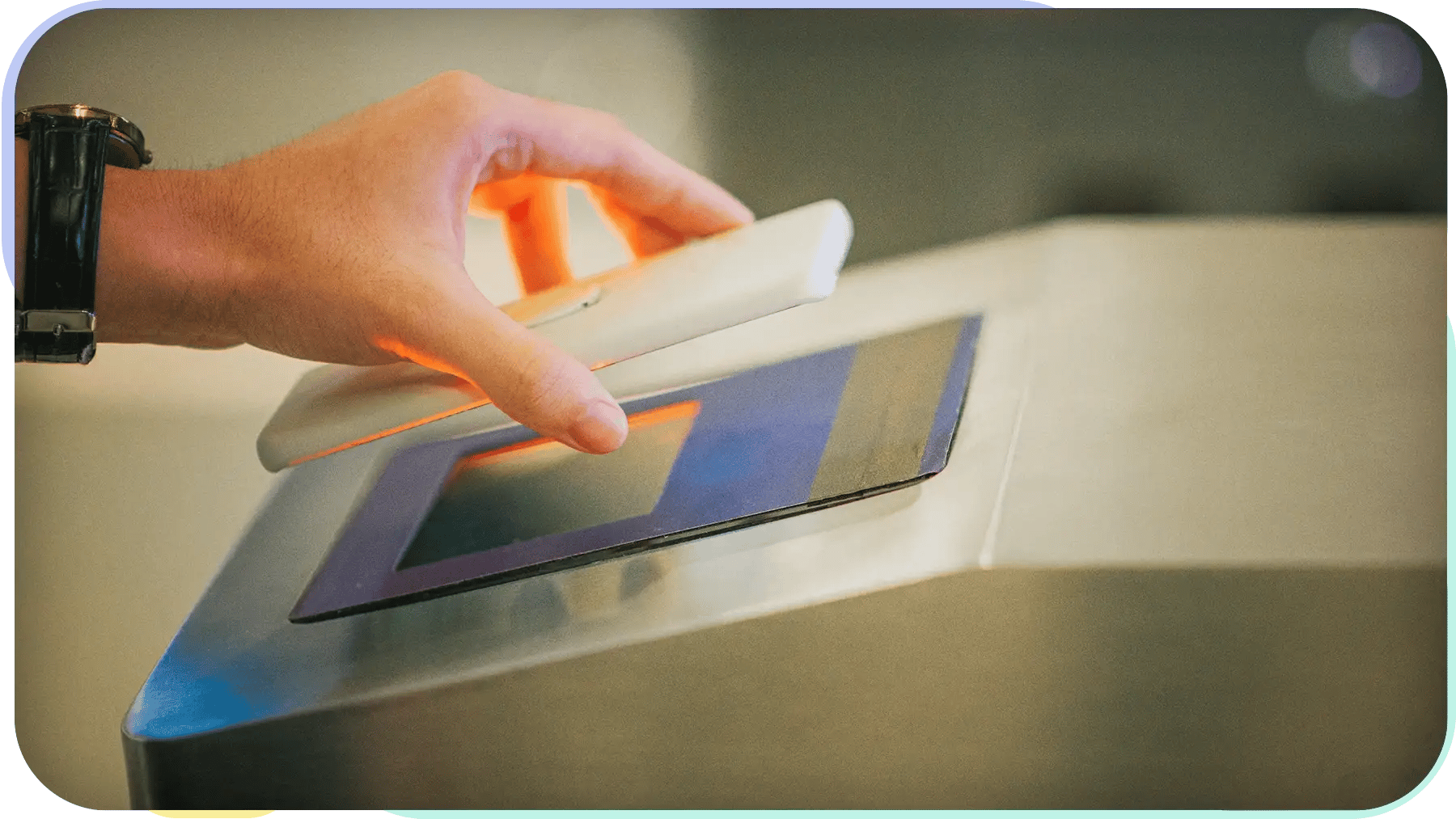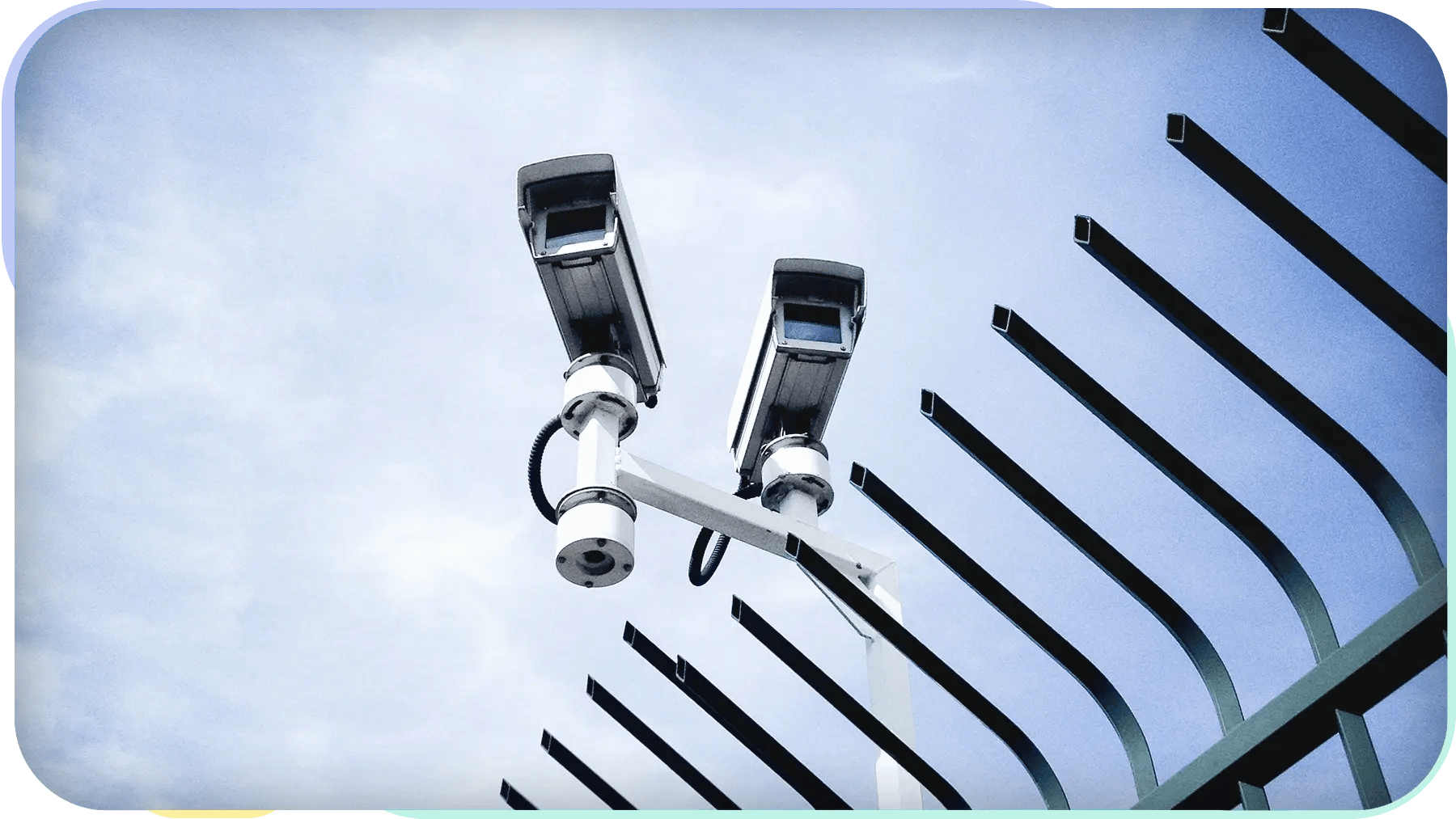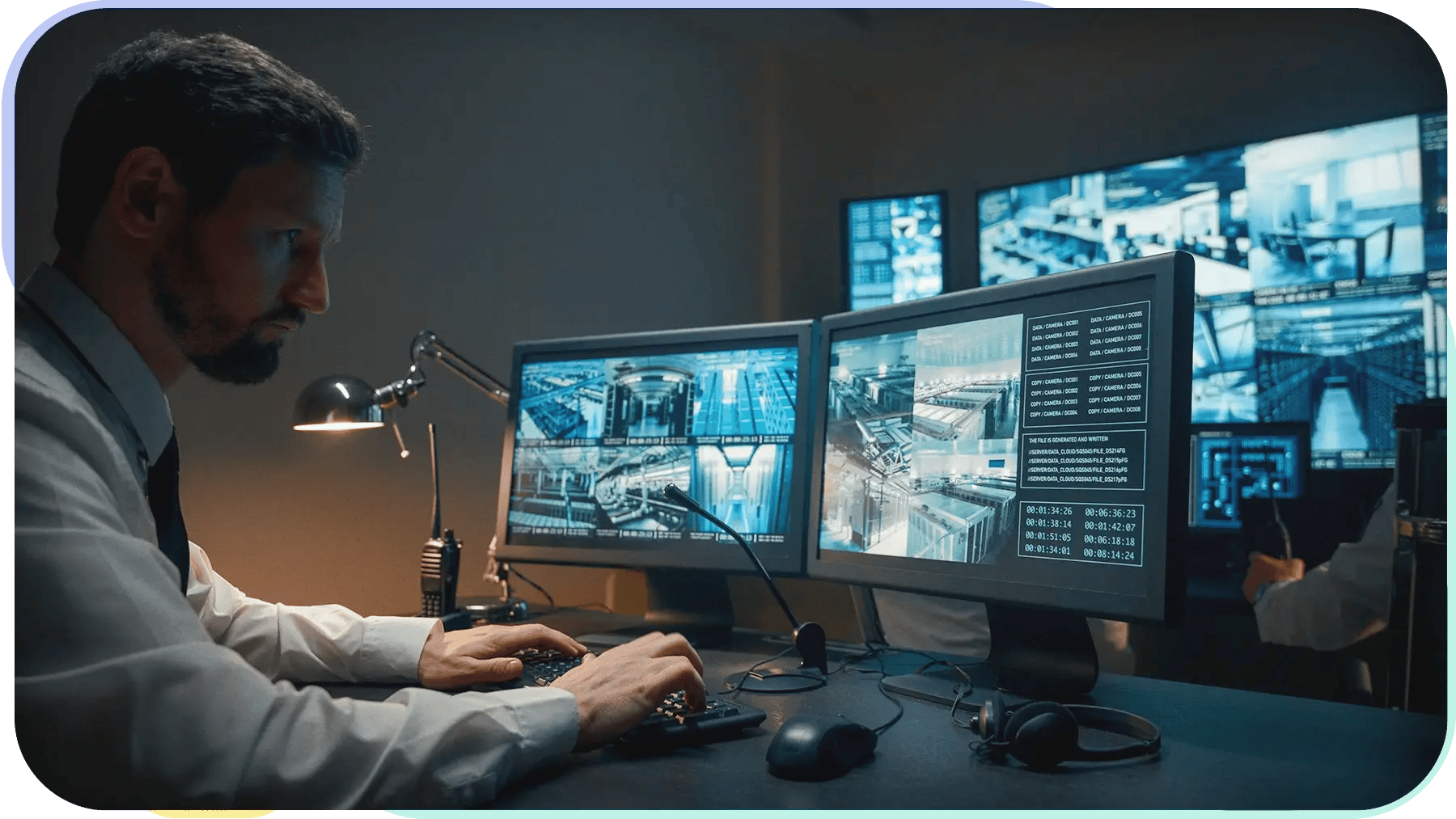- Products
- Use Cases
- Process contractors and validate credentials
- Improve facility compliance to industry standards
- Improve speed of visitor check-in process
- Screen visitors or restrict access to my facility
- Automate my reception experience
- Improve and automate my facility evacuation process
- Manage facility security across multiple locations
- Industries
- Pricing
- Resources
- Company
Balancing Cyber and Physical Security in an Enterprise Environment
February 22, 2023
Maintaining the security, privacy, and integrity of your facility's assets is essential – be that in the physical or digital realm. In many industries, mandatory requirements for both affect your organization's relationships and profits.
While they operate in two seemingly different worlds, there is a need for tools that marry both. Cybersecurity overlaps with the security of the physical aspects of the infrastructure. Therefore, learning the differences and similarities between physical and cybersecurity is important. Learning to merge them enables a more comprehensive and holistic security strategy.
Physical vs. Cybersecurity: What's the Difference?
Physical and digital cybersecurity are two sides of the same coin. Digital security protects all nonphysical resources in your infrastructure, from applications and operations to data and user profiles. Some digital security features include:
- Firewalls
- Endpoint detection and response (EDR) solutions
- Identity authentication tools
- Encryption
On the other hand, physical security is concerned with all non-digital elements of security, for instance:
- Monitoring and tracking visitors
- Controlling access points
- Maintaining visitor logs
- Perimeter security
- Visitor validation
- Evacuations and mustering
Ensuring A Strong Digital and Physical Security Foundation
With a growing emphasis on the digital aspects of cybersecurity due to the rise in cyber threats and attacks like data theft, organizations sometimes overlook the importance of physical security and how it overlaps greatly with digital cybersecurity.
Follow these five tips to physically and digitally secure your organization’s infrastructure.

-
Prevent Those with Unauthorized Entry with Access Controls
The first step toward achieving physical security is controlling access. This is especially important in high-security environments with strict compliance regulations. A smart access control solution enables easy entrances for contractors and employees while leveraging automated watchlist screening to keep out known bad actors.
Manually granting or denying access to visitors is a long process that is impractical in most scenarios. Especially if you have limited front desk personnel, a high volume of visitors, or require multi-location visitor management. A digital visitor management system can alleviate this challenge by integrating visitor sign-ins directly into your access controls. As a result, credentials and details are easily captured while optimizing access controls for a secure, streamlined process.
-
Identify Current Security Threats & Weaknesses in your Infrastructure
Instead of constructing a more comprehensive approach to physical-digital cybersecurity from scratch, it's more time and cost-effective to fix the gaps in what you already have.
Conduct internal or external evaluations of your infrastructure and network's security strategy to find possible avenues of attack and vulnerabilities. Penetration tests and automated vulnerability scans can also reveal the most about the state of security by actively looking for unsecured access ports and communications protocols.

-
Institute Physical Security Measures to Protect Physical Assets
You should include any individual — guest or employee — or device who comes in contact with the infrastructure's hardware or software in your physical security strategy. Since software network security works best at the outer perimeter, malicious individuals with direct access to internal network devices may be able to bypass all digital security measures.
It is best to institute mandatory protocols for how employees and visitors handle connected devices.
Additionally, use a tiered approach to prevent employees from different access privileges levels from accessing devices above their needs. This can help against insider attacks and the spreading of a successful phishing scheme.

-
Create a Cyber and Physical Security Convergence Strategy
Converged security aims to create a more comprehensive and holistic approach to critical infrastructure security by simultaneously looking at both the physical and digital aspects. Knowledge and resources are pooled from both fronts and combined into a unified security response.
Any security and integrity solution implemented through convergence must include both the physical and digital elements. The same applies to crisis responses. Alerts of unauthorized physical access to servers should trigger a digital response that limits the free transmission of data throughout the network and greatly limit access privileges until the issue is resolved.
The primary purpose of a converged security approach is to improve your organization's efficiency and effectiveness in security and privacy, reduce the chances of sophisticated attacks, and in some instances, gain the necessary certifications to operate in the industry.
-
Communicate Changes in Business Operations to Your Employees
The weakest link in digital and physical cybersecurity remains the element of human error, constituting over 80% of security breaches. Most cyberattacks are conducted directly or indirectly through employees, so they are important to consider in your security plan.
Host regular seminars and workshops that keep employees updated on the latest security threats and how they relate to the converged security strategy you have in place. Furthermore, consider the hard enforcement of security and privacy protocols relating to using and accessing connected devices — personal or company-issued.
The Benefits of Integrating Cyber-Physical Systems
Balancing physical and cybersecurity needs is critical to implementing an effective security strategy in any facility.
Some notable benefits of integrating cyber-physical systems into your organization's security include the following:
- Stronger security response on both the physical and digital fronts
- Improved communications between digital and physical infrastructure management
- Reduced costs related to cyber threats in the long run
- Improved organizational security and immunity to attacks
- The trust and confidence of customers, clients, and business partners
Streamline Security with Facility Management Software
iLobby is one of the world’s leading providers of enterprise-grade visitor and facility management software. We implement powerful PIAM software & technology that helps streamline facility management and security. Schedule a demo with iLobby to see how we can help you enhance your organization’s security today.
Jeff Gladwish
Jeff Gladwish is the Chief Revenue Officer at iLobby where he spearheads the go-to-market strategy, driving the growth and adoption of our Facility and Visitor Management solutions. In 2023, Jeff was named one of Influitive’s Fearless 50 Customer-Led Marketing Leaders, an award that recognizes executives pushing the boundaries of customer marketing, advocacy, community, and loyalty.

